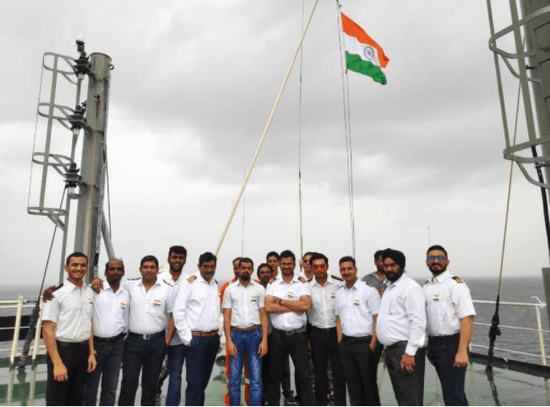After repeatedly hyped about the problem of Australian coal ships “staying in Chinese ports”, the Australian media also targeted the Indian crew on the ship, saying that they were “desperate”.
The website of Australia’s SBS Broadcasting Company reported on the 16th that despair spread among a group of Indian sailors after being trapped off the coast of China because it carried 160,000 tons of Australian coal on board.
Their “Jag Anand” belongs to the Great Eastern Shipping Company of India. It departed from Australia on May 24 May and arrived at the Chinese port on June 13. There were about 20 crew members on board.
After staying at sea for half a year, a crew member named Virendrsingh Bhosale told the Australian media that “we are completely exhausted” and he himself was forced to separate from his wife and 5-year-old son in India, hoping that the situation will end now.
Bhosale also asked the Australian media for help: “Please help us get home as soon as possible.”
SBS news sources said that the Chinese Ministry of Foreign Affairs and the Indian Embassy have held discussions on repatriation.
In addition to SBS, The Australian also began to report on the Indian crew on the ship on the 16th.
The MV Anastasia, which belongs to Swiss-Italian Mediterranean Shipping Company, sailed from Queensland in July with coal and is currently allegedly trapped off the coast of China because “China refuses the ship to unload and does not allow the ship company to change its crew”. The crew are mainly from Mumbai, India.
One crew member tweeted for help: “We are not (simple) Australians, Indians or Chinese. We are sailors, and most importantly, we are human. Returning it was not easy and we were not delivering pizza. If possible, we could have left China.
He shouted to the Australian government, “We only hope that the Australian government will have a healthy dialogue with China, because trade problems are affecting us”, and advised the Australian government that “the shipper is the Australian side, and they can pressure the Chinese receiver to change the crew by any means.”
However, due to the epidemic, many crew members were banned from disembarking the ship. Legally, the maximum length of the crew to go to sea is 11 months.
At a time when the hype that China will blockade Australian coal imports is rampant, the Australian coal industry is in anxiety.
They pleaded with the Morrison government to cooperate with China to ensure that the restrictions will not be imposed and restore the stability of long-term trade relations between the two countries.
In fact, in response to the Australian media’s routine of playing sad cards, as early as November 10, Foreign Ministry spokesman Wang Wenbin clearly responded, “I have learned that China has clear regulations on the prevention and control of the epidemic at the port and the quarantine requirements for crew, and has been providing convenience to the crew members within the permitted scope of the regulations.”
What’s more, “forced buying and selling” has not met the market demand of the 21st century.
Rather than indefinitely hyping “China refuses to unload the ship”, the Australian media should ask what Australian employers who are really responsible for the Indian crew – what do?
It is worth noting that on the 25th of last month, Foreign Ministry spokesman Zhao Lijian also broke the reason behind the point: In recent years, the Chinese Customs has carried out risk monitoring and analysis of the safety quality of imported coal, and found that there are many unqualified imported coal.
China strengthens the quality and safety inspection of imported coal and the inspection of environmental protection projects in accordance with the law and regulations, so as to better protect the legitimate rights and interests of Chinese enterprises and environmental safety.



